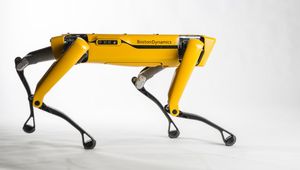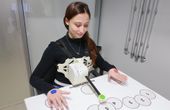3D Printable HACKberry - An Open-Source Bionic Arm
An open-source 3D-printable bionic arm that can assist a global community of amputees.
Technical Specifications
| Microcontroller | Arduino Micro |
| Platform | Open-source |
| Control Method | Myoelectric control |
Overview
Built for Amputees and Disabled Users
HACKberry is a simplistic bionic arm that can help amputees carry out their day-to-day activities. The emphasis on developing a stand-alone bionic arm with open access to 3D printing files primarily helps users with the following:
Accessing a low-cost, easy-to-use bionic arm for daily use.
Ensuring flawless and intuitive arm operations like extension, gripping, and arm bending without relying on an external controller.
What’s a Bionic Arm?
A basic bionic arm works just like a standard human arm. The user can intuitively operate the arm and control its movements, similar to a natural arm. Bionic arms work with a combination of myoelectric signals and residual muscles that connect the bionic arm to the body.
Since HACKberry works on myoelectric control, it connects with the body muscles through electrodes placed on the skin. These electrodes usually are located on the residual limb to draw electric signals.
As the sensors receive signals from the muscle tissues, they transmit them to the Arduino microcontroller that regulates hand gestures and movements. Based on the design, HACKberry can control the following actions:
Bending of the arm
Expansion of the arm
Gripping objects
Releasing objects
Sophisticated Design Onboarding Self-Invented Sensors and Robotic Parts
The bionic arm uses an Arduino microcontroller. Since it’s an open-source project, the source code is readily available under license. However, there are specific self-invented additional parts in HACKberry that add uniqueness to the project. The additional inventions include:
The sensor used inside the bionic arm detects ridges in the muscle tissues. Masahiro Yoshikawa, an Osaka Institute of Technology Associate Professor, invented it.
The joint mechanism allows the bionic arm to operate like a regular human arm.
Since the design files and 3D data are openly available, developers can create their own and improved versions of robotic bionic arms.
Open-Source Project Unites a Global Community on One Platform
The primary objective behind HACKberry is to make it easier and more practical for users. That’s why it allows robotics enthusiasts to access design files and 3D data for creating unique bionic arm designs.
Therefore, all the uploaded content on the Exii website and GitHub is readily available for recreating the bionic arm. Moreover, the platform aims to unite developers from all over the globe, enabling them to experiment and improvise features that can benefit real-life users.
As more engineers and creators joined the cause, there have been several noticeable implementations and design improvements in HACKberry in several parts of the world. Some of the prominent ones include:
Development of a kid-sized version of HACKberry in Poland
HACKberry development by a prosthesis user for personal use in Germany
Likewise, several other developers from Japan, China, Indonesia, Russia, India, the USA, England, and many others chipped in, helping improve HACKberry’s design and features.










